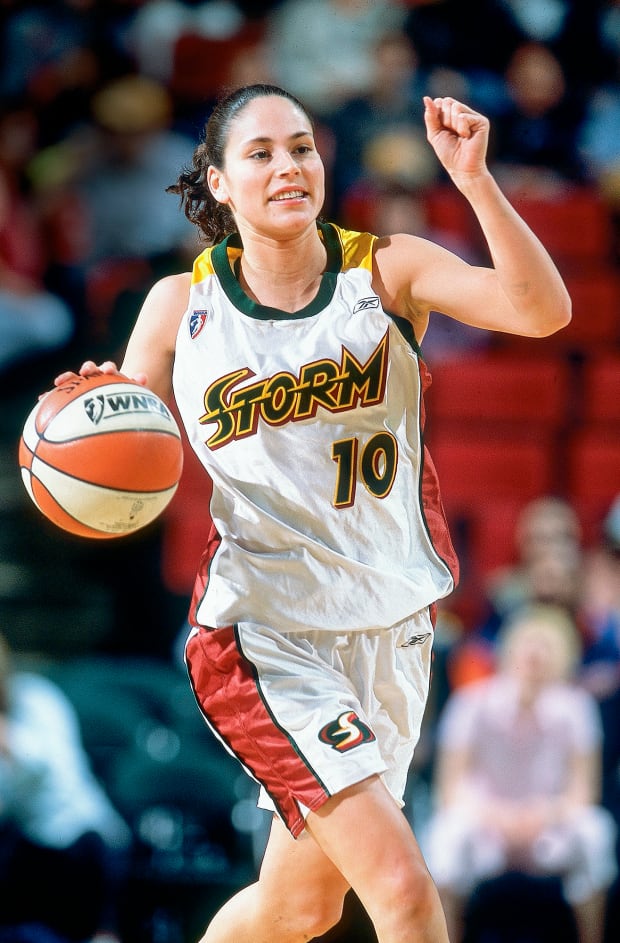
Robert Beck/Sports Illustrated
SUE BIRD
Just try fitting her accomplishments into a tight space. Bird, at 42, has won four WNBA championships, two NCAA championships and titles in both the EuroLeague and the Russian Superleague. She is the WNBA’s all-time leader in assists (3,048), starts (549) and games played (580; no one else in league history has seen more than 500). There’s much more, but, you know: tight space. Last season she led one final playoff run—the 15th of her storied career—while capturing the attention of a city long starved for big-time basketball. Bird’s GOAT-ness is best summarized by something one of her coaches, Dan Hughes, said before her final Storm home game. When someone says “point guard,” Hughes noted that he thinks first of Sue Bird. She’s that elite. “Like quarterback/Tom Brady.” —Greg Bishop
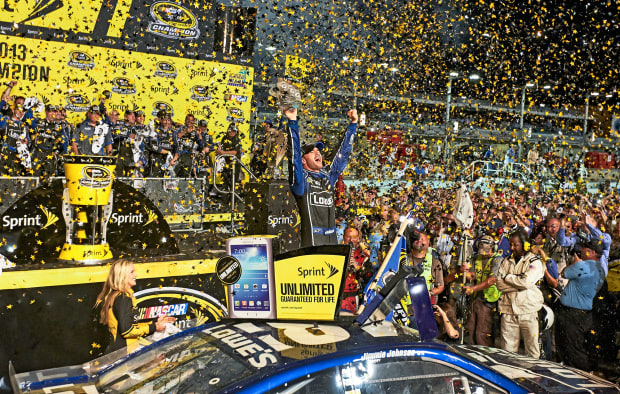
Simon Bruty/Sports Illustrated
JIMMIE JOHNSON
No one has won more NASCAR titles than Johnson. The other two men tied with him at seven wins are Richard Petty and Dale Earnhardt, a pair of Southern gents who dominated when it was possible to win a race by six or eight laps. Johnson, the 47-year-old Californian, won his championships at a time when technology and rules conspired to level the playing field—which is literally what Johnson did at the end of his career, when he traded the banks of Daytona for the flats of the Brickyard. His foray into open-wheel racing didn’t yield much in the way of results, but it served to remind us who Johnson was: a guy who loves to drive all manner of vehicles fast. Stock cars. (He’ll drive part time in NASCAR next year.) Indy cars. Motorcycles. Off-road desert racers. Above all, he showed that a kid from the West Coast could be beloved as he beat the Good Ol’ Boys in a way we’ll likely never see again.
—Mark Bechtel
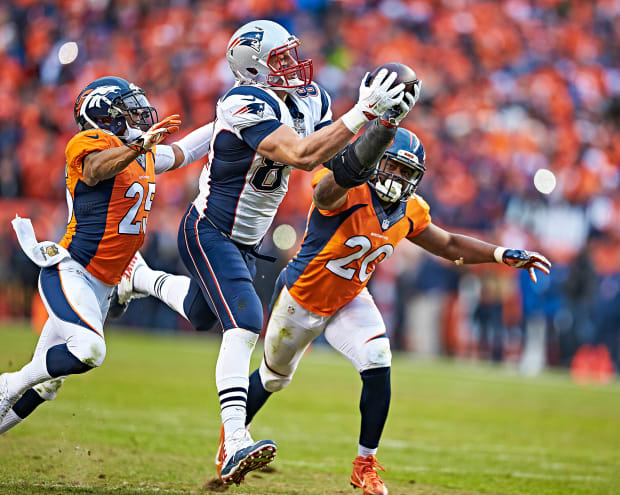
Jeff Haynes/Sports Illustrated
ROB GRONKOWSKI
Gronkowski was the first modern Super Tight End, and he was a catalyst for the later years of New England’s two-decades-long stretch of dominance. He was, essentially, a Pro Bowl left tackle and wide receiver all at once. Last we saw him in a football context, he was wrapping up an injury-plagued season with a playoff loss to the Rams. But perhaps it’s better to remember him in a version of his natural habitat: booty-dropping on a boat after the Buccaneers won Super Bowl LV. He now seems content masterminding his brand, maintaining the illusion that he’s a meathead, rather than a football savant. Today’s NFL is full of tight ends like Mark Andrews, George Kittle and Travis Kelce—brutal blockers and A-plus pass catchers. That’s the biggest compliment you could give Gronk: As he left the scene, everyone tried to find a knockoff.
—Conor Orr
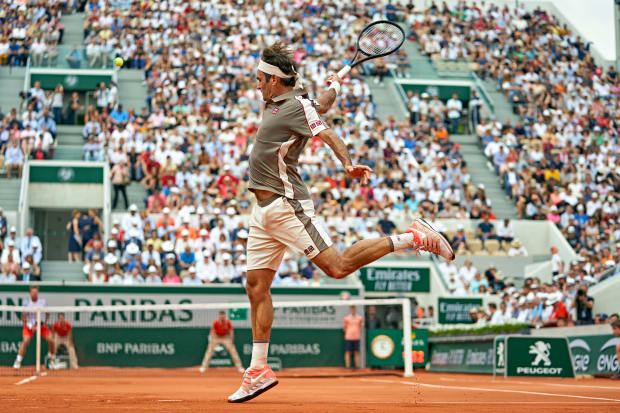
Erick W. Rasco/Sports Illustrated
ROGER FEDERER
Many of his records have already been surpassed. Does that make him, now, a folk hero? That wouldn’t be quite right; Federer was far too popular, too present, to be defined by only myth. But it’s hard not to think about his game in supernatural terms. He made David Foster Wallace dissolve into a puddle; he turned even the most staid writers purple. He was levitation and liquid and all those things. He was also just good. He won 20 majors, sure. But at his peak, he was sickeningly consistent: There were 25 majors played from 2004 to ’10, and Federer played in 21 of those finals. He warded off Rafael Nadal and Novak Djokovic for as long as he could. But once they surpassed him, he did not wilt. He fought hard for a decade and was rewarded with a last spurt of majors in his late 30s. He’s 41 now, with a bad right knee, so he played his last match, his only one of the ’22 season, in doubles alongside Nadal. Fitting for an athlete who loved achieving, but who seemed to love
playing even more. —Chris Almeida
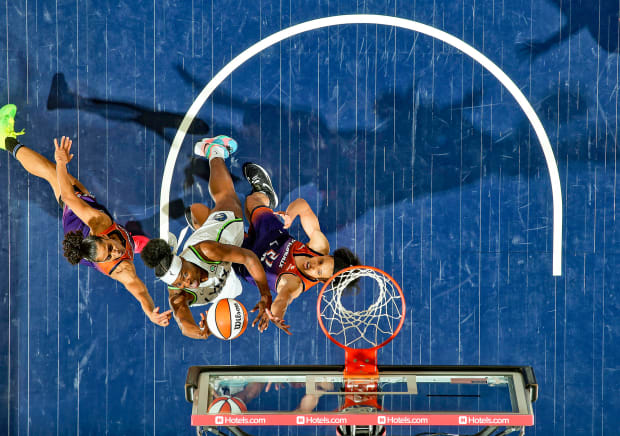
David Sherman/NBAE/Getty Images
SYLVIA FOWLES
Going into her final season, Fowles already had a rock-solid claim to the title of best center in WNBA history. But she added to her résumé by making the All-Defensive team for the 11th time in 15 years. She led the league in field goal percentage (62.2%) and rebounding average (9.8); bigger picture, she became the first player to surpass 4,000 career boards and by year’s end was No. 3 all time in blocked shots (721). At 37, she walks away from the game with 193 career double doubles and holds career records for FG percentage (59.9%) and anything having to do with a rebound. She won two titles, and she also set an example of what a superstar can be: a mentor, an amateur cyclist and so much more—she’s a passionate student of the mortuary sciences and may soon work as a mortician. She didn’t lead the Lynx to the playoffs this year, but she showed the world that, even for the great ones, there’s more to life than just the game. —Greg Bishop
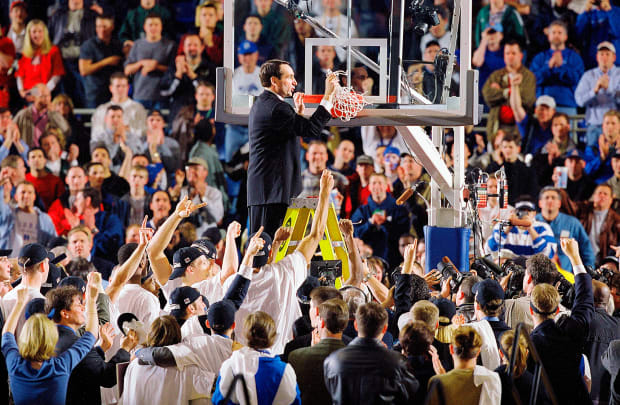
John W. McDonough/Sports Illustrated
MIKE KRZYZEWSKI
Krzyzewski’s achievements can be described in so many ways, but for the moment, this will do: In the last of his 42 seasons at Duke, the year he turned 75, he won an ACC regular-season championship and made the Final Four—and those meager-by-his-standards accomplishments were used by rivals to mock him. Duke haters had to settle for small losses. Yes, Krzyzewski’s Blue Devils were upset by North Carolina in his final home game, and then again in a national semifinal. But that season would have been the best in the last 40 years for, say, Purdue. Krzyzewski captured five national championships at a school that previously had none. He won more games than any men’s coach ever. His replacement, Jon Scheyer, will try to uphold the standard. But no other active coach can be compared to Coach K. —Michael Rosenberg
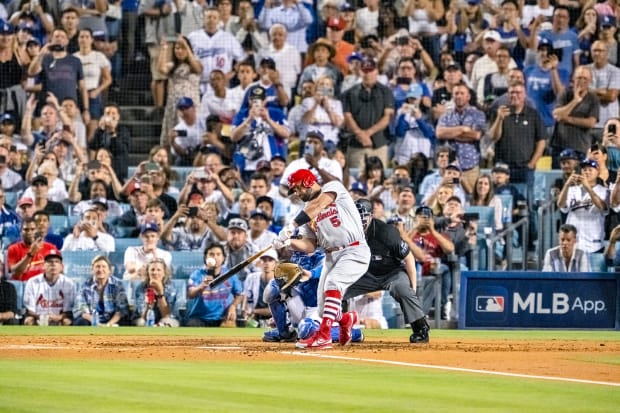
John W. McDonough/Sports Illustrated
ALBERT PUJOLS
Nothing captures Pujols’s talent like his nickname: The Machine. To earn that moniker, he was not just incredibly powerful but also incredibly consistent, a hitter who thrived on the border of what seemed reasonable for a human being. And that was Pujols—so good that it seemed he could hardly be real. He was Rookie of the Year, a three-time MVP, a six-time Silver Slugger and 11-time All-Star. Throughout the aughts, he was a batter who rarely had credible peers. Even the best machines wear out eventually, but in his final season, at age 42, Pujols managed one last thrill with a return to form. He hit
24 home runs in 2022, passing the milestone of 700 and finishing with a career total of 703. Now, in retirement, his legacy endures through his other nickname—one bestowed on him not by media or fans. Tío Albert, as fellow players call him, has been a source of mentorship and wisdom, leaving friends and protégés across the game. —Emma Baccellieri
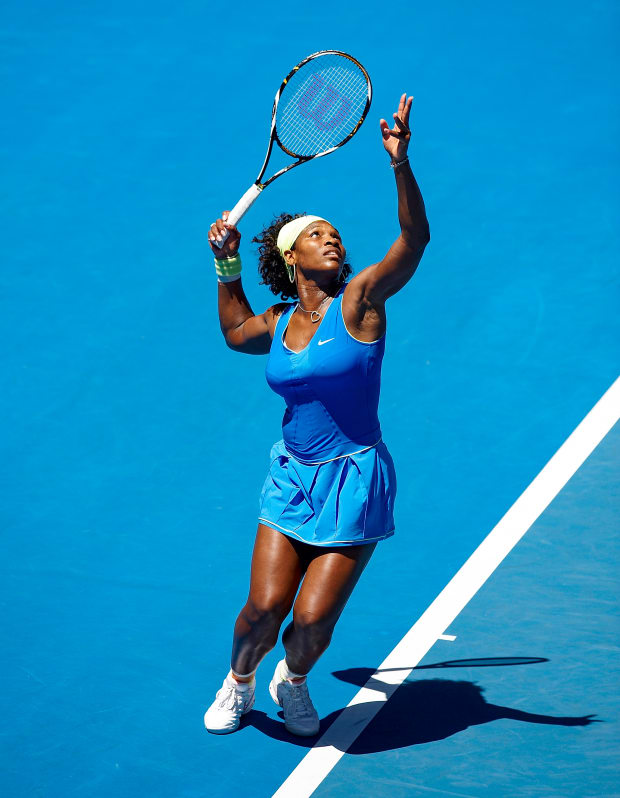
Bob Martin/Sports Illustrated
SERENA WILLIAMS
When SHE won the 1999 U.S. Open, her first major singles title, Williams was 17. When she retired (we think; it seems, uh, fluid) at the 2022 U.S. Open, she was 40 and in pursuit of her 24th major. For almost a quarter century, she won everywhere, in every imaginable context, against all manner of opposition. But facts and figures don’t do justice to her impact on the sport, if not on all sports. She fired up something for the memory banks this year in New York when she beat the No. 2 player in the world (someone 15 years her junior). But her retirement also doubled as a career celebration. It was attended, yes, by celebrities (Tiger, Zendaya, Spike Lee), but also by fans of all ages and backgrounds. The next Serena? She is a literal once-in-a-lifetime athlete. Consider this: With Williams retired, the active WTA player with the most major singles titles has only seven. That would be Serena’s older sister Venus. —L. Jon Wertheim







